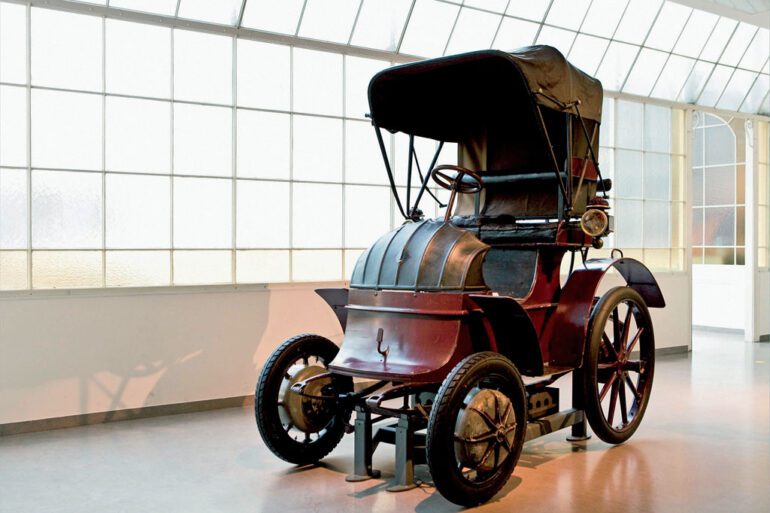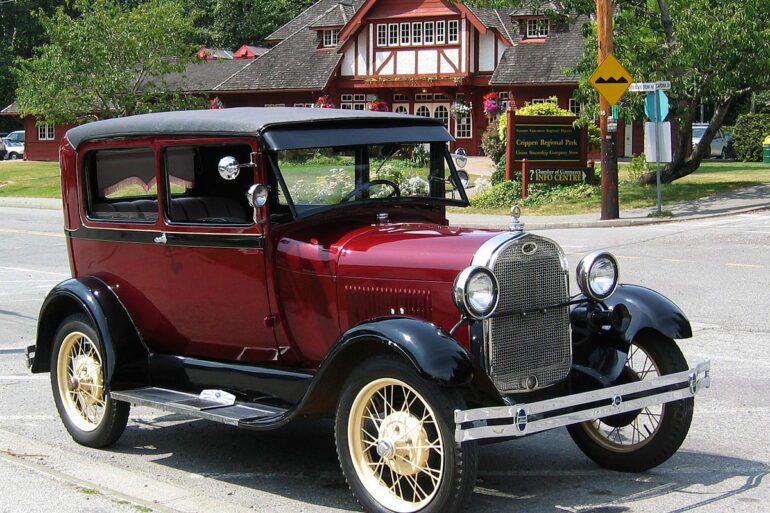Rarest Porsche 964 911s
Updated September 2023 by Eduardo Zepeda

Stunning and unique 964 911s
About Our Selections
The 964 generation 911 is a particularly noteworthy example of this automotive classic due to the remarkable rarity of several one-of-a-kind models and the timelessness of their design and engineering.
This excursion into the rarest of the rare, the Porsche 911 964, is a journey into the heart of these automotive gems. This article explores the origins, aesthetics, and breathtaking performance of some of the most legendary 964 911s ever built, shedding light on the allure of genuine Porsche unicorns.
Porsche 964 911 Carrera RS
The road racer
Why We Picked It:
In homage to the 1973 911 Carrera RS, Porsche derived the Carrera 2 from the race-ready Cup car and used the same formula to develop a lightweight version of the Carrera 2. Porsche began shipping the Carrera RS, also known as the 964 RS, in November 1991 for the 1992 model year with a limited production run of 2,282.
Porsche engineers prioritized reducing the 964 RS's weight and successfully cut over 300 pounds. The 964 RS came in 286 pounds lighter than the base model at a total weight of 2706. In addition to the M64 engine used in the 964 Carrera 2 and 4, the 964 RS also had an improved version (M64/03) of the same unit. Porsche engineers worked their magic, and the new air-cooled 3.6-liter Boxer engine gained ten more horses.
The 964 RS shared the same power and top speed as its coupe inspiration. Due to its lower curb weight, it had far more acceleration than the car it was based on. The sprint from zero to sixty miles per hour took only 5.1 seconds (0.5 faster than the conventional C2). It performed superbly on the track, comfortably outperforming the C2. A car like the 964 RS is a great entry point if you want to learn about modern 911 R models.
Specifications:
Price: $200,000-$300,000
Engine: 3.6L Flat-Six
Power: 260 hp
Torque: 229 lb-ft
Transmission: 5-Speed Manual
Curb Weight: 2,706 lbs
Highlights:
The RS featured several lightweight components, including a carbon fiber hood, plastic windows, and a stripped-down interior. This helped to reduce the car's weight by over 200 pounds, which improved its performance.
The 964 Carrera RS was the first 911 to be homologated for racing since the 1973 Carrera RS 2.7.
Learn More:
Porsche 964 911 Carrera RS 3.8
Bred for racing
Why We Picked It:
It's no joke when we say that the Porsche 964 911 Carrera RS 3.8 had everything big. For instance, it sported the wide-body look of the Type 964 Turbo, a huge rear spoiler, and three-piece "Speedline for Porsche" wheels with 235/40 and 285/35 tires, making it look noticeably more aggressive than the subdued Carrera RS of 1992 and capable of providing significantly more mechanical grip. Its air-cooled engine was bigger than the Carrera RS's, with a displacement of 3.8 liters, producing more power.
The 964 Carrera RS 3.8 was built as a homologation platform for the legendary 3.8 RSR, which went on to win a slew of races worldwide. It was introduced in 1993 as an extreme evolution of the 964 Carrera RS from two years prior, and only a handful were ever made, 55 to be exact.
Following in the footsteps of the RS 2.7 and RS 3.0 models, Porsche paid a premium on lightness by borrowing extensively from the 964 Cup cars. For instance, the gearing of the gearbox was adjusted to maximize the improved power-to-weight ratio. The 964 911 Carrera RS could go from 0 to 60 mph in 4.9 seconds and reach a top speed of 169 mph.
Specifications:
Price: $1,000,000-$1,900,000
Engine: 3.8L Turbocharged Flat-Six
Power: 300 hp
Torque: 265 lb-ft
Transmission: 5-Speed Manual
Curb Weight: 2,700 lbs
Highlights:
The Porsche 964 911 Carrera RS featured a lightweight Turbo body, a large rear wing, and 18-inch Speedline wheels. Power came from a new, more powerful 3.8-liter unit.
A more intense and responsive driving experience resulted from the Carrera RS 3.8's weight reduction of about 600 pounds when compared to a stock Carrera 2.
Learn More:
Porsche 964 911 Carrera 4 Liechtbau
A road-legal racer
Why We Picked It:
The 964 C4 Lightweight, the rarest version of the RS, was also one of the best. The 964 Leichtbau incorporated unused components from the 953 Paris-Dakar effort. The Porsche factory built a small number of lightweight 911s. The plan was to use the 964 RS chassis and equip it with the 959's superior all-wheel-drive technology in a 22-car limited edition.
The 964 C4 Lightweight used the same 3.6-liter flat-six as the 964 RS but was tuned to produce 300 horsepower. Porsche engineers unlocked the additional power by ditching the car's mufflers and catalytic converters.
The 953 Paris-Dakar project is responsible for employing a Rally-style gearbox in the powertrain, which features two rotary knobs on the center console to allow the driver to change the torque split between the center and rear differentials. This all-wheel-drive system was developed for racing and had a variable torque split that could be adjusted by the driver.
The RS Lightweight's 1098 kg weight is part of the reason for its name. The car's tub was seam welded, and its fixed windows had sliding panels, making it racing-ready. The external oil filler was reinstated, which provided a tell in front of the right rear wing.
Specifications:
Price: $800,000-$1,000,000
Engine: 3.6L Flat-Six
Power: 300hp
Torque: 265 lb-ft
Transmission: 5-Speed Manual
Curb Weight: 2,400 lbs
Highlights:
Its 2,400-pound weight and incredibly short gearing limited its top speed to 125 mph. While Porsche claims a 4.5-second sprint to 60 mph, our testing showed a far faster 3.9 seconds.
A strut brace, a Matter roll cage, and adjustable Cup suspension finish the Carrera 4 Lightweight's conversion to a road-legal racer.
Learn More:
Porsche 964 911 Turbo S 3.3
The track-focused pocket rocket
Why We Picked It:
In 1992, Porsche launched an improved variant of the 911 Turbo, the Turbo S, as a street version of the cars that compete in IMSA, still with the 3.3L engine but with larger injectors, a larger KKK turbo, larger valves, larger camshafts, and tuned electronics, achieving 381 hp and 362 lb-ft of torque, making it one of the fastest cars back then.
Since the 964 Turbo S was more track-focused, Porsche nixed components such as air conditioning, power windows and locks, rear seats, rear wiper blades, a radio, insulation, power steering, and backrests. Porsche added Recaro competition, slimmer side, and rear windows, Carrera RS quarter doors, and doors made of CFRP, which represented a reduction of 180 kg in the weight of the 964 Turbo.
On the outside, two air intakes were added to the rear fenders, and the front also had two air intakes in place of the fog lights. To complement the exterior, 18-inch three-spoke Speedline wheels and red-painted brake calipers, which were also larger, were added. The suspension was lowered, and a stabilizer bar was added to the front. Only 86 examples of the Turbo S with a 3.3-liter engine were manufactured.
Specifications:
Price: $250,000-$350,000
Engine: 3.6L Turbocharged Flat-Six
Power: 381 hp
Torque: 362 lb-ft
Transmission: 5-Speed Manual
Curb Weight: 2,844 lbs
Highlights:
The engine used a second oil cooler and a slightly higher boost to improve overall performance.
Just over 80 Turbo S models were produced in Grand Prix White, Maritime Blue, Black, or Midnight Blue Metallic with custom-optioned interior colors.
Learn More:
Porsche 964 911 Turbo 3.6 S Flachbau (Flat Nose)
The final hurrah for the 964 Turbo
Why We Picked It:
As the production of the Porsche 964 came to a close, the company produced a limited run of Turbo models designated as the 3.6 S. The '36S' bundle had regionally tailored body packages for the X88 'S' engine. The 3.6 Turbo S could go from 0-60 in 4.0 seconds and reach a top speed of 174 mph.
Porsche has only produced 93 Turbo chassis. These were shipped to Porsche Exclusive Manufaktur, meticulously crafted into the one-of-a-kind 964 Turbo 3.6 S.
Both conventional and flat-nose 'Flachbau' versions were made available. While the 'Flachbau' nose was a standard feature on most Turbo S models, it was an extra expense for some. There were 76 automobiles with a Flatnose and 17 with a different body style (called a "Package option").
The X88 package added an auxiliary oil cooler and boosted power to 380 hp for these vehicles. A larger turbocharger (the K27 7006 turbocharger with greater boost), new camshafts, new cylinder heads, and revised valve timing all contributed to the increase in output. The package cars had an X92 front lip spoiler, an X93 rear spoiler, and optional X99 engine air inlets. It was the last Porsche 911 that was entirely hand-built and limited to 75 units (flat nose)
Specifications:
Price: $600,000-$1,000,000
Engine: 3.6L Turbocharged Flat-Six
Power: 380 hp
Torque: 384 lb-ft
Transmission: 5-Speed Manual
Curb Weight: 3,240 lbs
Highlights:
Japan received its own special X83 package, the Furrattonozu. The rear fender vents and the folding headlamps give these a 930 vibe.
Porsche integrated fog lights into the front scoops of the X84, which was exported to markets outside the United States. Seventeen more cars with conventional fixed headlights but the same 3.6 S package were produced for the American and Canadian markets.











